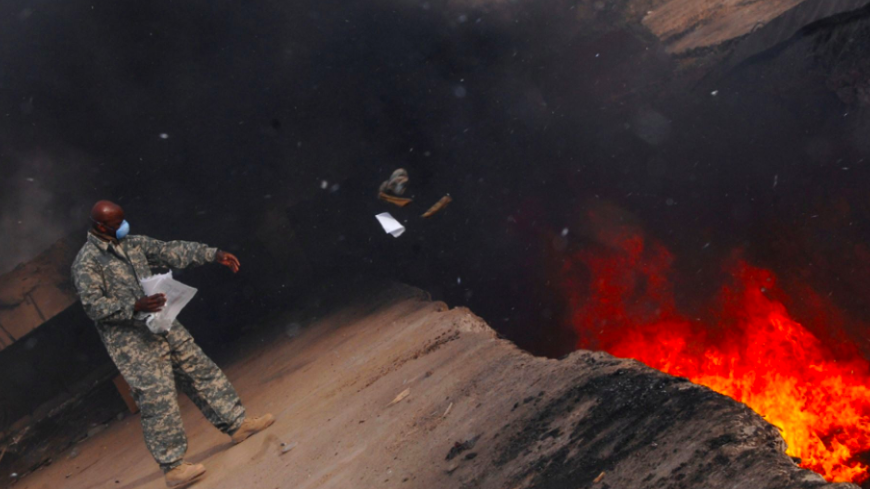
Thousands of U.S. military personnel in Iraq and Afghanistan were exposed to the smoke from burn pits Photo: Fox News
This Memorial Day we honor the military service of Americans who made the ultimate sacrifice defending our nation. In April of 2018, the Department of Defense provided Congress a list of contaminated U.S. military bases — the document, according to Healthline, identified 401 active installations in the United States with at least one area where there was a known or suspected release of cancer-causing compounds. Exposure to toxic chemicals and the weapons of war has hastened the death of many service members — and it’s not just them, it is also their family members who are at elevated risk for cancer and other debilitating illnesses.
- Today’s veterans face problems from exposure to toxic substances in Iraq and Afghanistan, especially from those fires known as burn pits, and these are still little understood, but a new study shows it leads to higher deadly cancer rates for veterans.
- Camp LeJuene in North Carolina has a long history since WWII as the home of the Marine Corps Second Expeditionary Force, and also the place where from August 1953 through the end of December 1987, people were potentially exposed to drinking water contaminated with industrial solvents, benzene, and other harmful chemicals. Thousands of military service members and their families have suffered from exposure and many have died as a result.
- The same was true for thousands of military veterans who were exposed to a variety of dangerous toxins including the infamous Agent Orange while stationed at Camp Carroll, a U.S. military base in South Korea, in the mid-1970s just after the Vietnam War.
These are not isolated incidents. Recently, we reported about the water at or around 126 military installations reportedly contains potentially harmful levels of perfluorinated compounds, which have been linked to cancers and developmental delays for fetuses and infants, and 2,668 groundwater wells both on and in the surrounding off-base community and found that 61 percent of them tested above the Environmental Protection Agency’s recommended levels. And these family-member illnesses and deaths have not been covered by the Department of Veterans Affairs or other military health care.
- Finally, last week the Senate Armed Services Committee included a provision in the Fiscal Year 2020 National Defense Authorization Act that will prevent the Pentagon from procuring and using firefighting foam made with PFAS chemicals on land-based military bases and installations, but not until October 1, 2022.
Why This Matters: As a veteran myself, I (Monica) find this unconscionable. The Healthline story explains the problem through the eyes of the son of a servicemember who now has terminal cancer because of the water he drank as an infant at Camp Lejeune. He is “lucky” because of a special law Congress passed a law in 2012 to cover the out of pocket costs of LeJeune families, but his employer’s health coverage has been expensive because the government has not picked up the full cost of his medical treatments. His father is angry. “People like my son and other dependent children of those of us who served our country, the families who lived aboard contaminated bases, are left twisting in the wind by our government,” he said. “It’s a tragedy.”
To Go Deeper: The entire Healthline.com story is worthy of your time and will give you a new appreciation for the sacrifices made by our military and their families.
May 26, 2019 » Agent Orange, burn pits, Camp Lejeune, memorial day, PFAS, toxic chemicals

